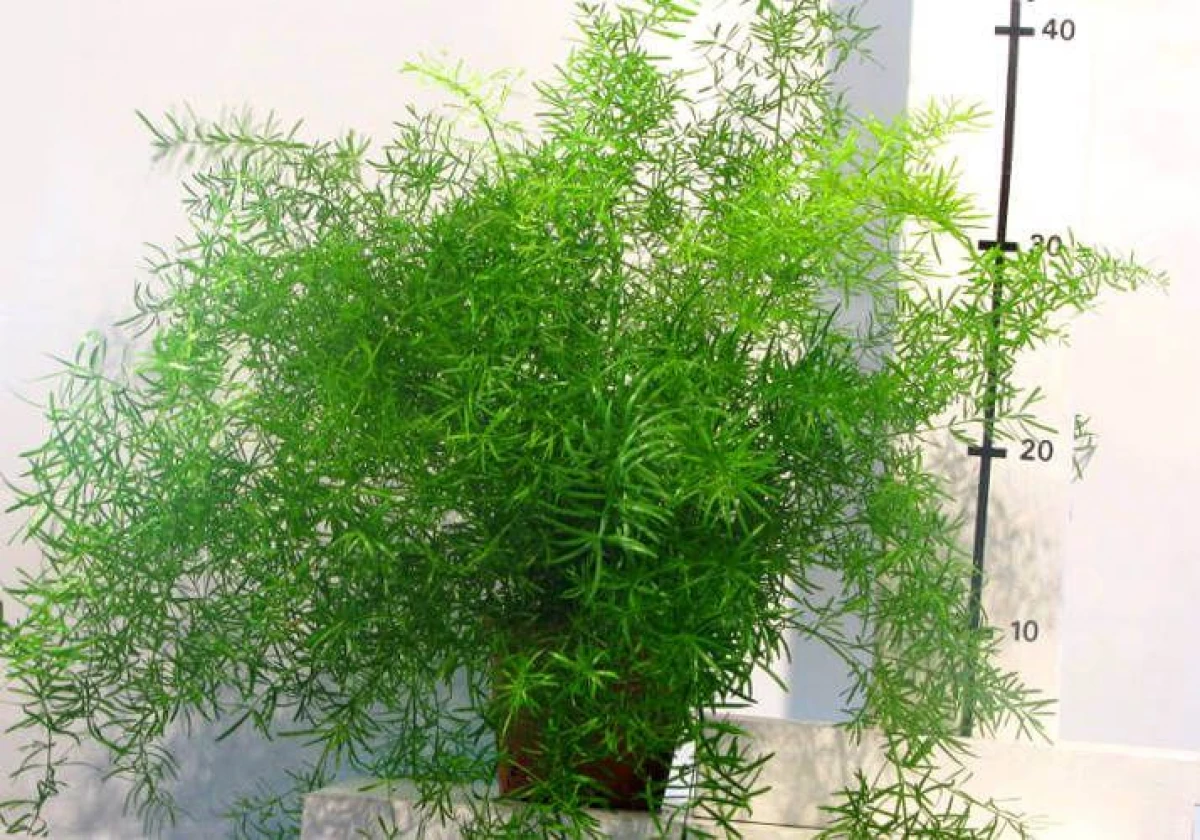
- Beautiful long-term green shrub, capable of decorating apartments, loggia, office space and household plots. However, making the choice in favor of this plant, it is necessary to understand that not all of it
Suitable for growing at home.
In addition, to obtain a beautiful and magnificent greenery and maintaining a decorative plant type, it is necessary to provide him with comfortable conditions. About how to care for him and will be our article.
Views suitable for home and their photos
There are more than 200 species of this long-term plant, but only some of them are suitable for growing at home.
Current or bristamed (Asparagus Plumosus)It has soft central shoots and a small bend, who gives him a particularly decorative look. The leaves reach the length of 0.5 cm, the filamentous twigs of about 1.5 cm are developing in their sinuses. Side shoots are arranged horizontally.
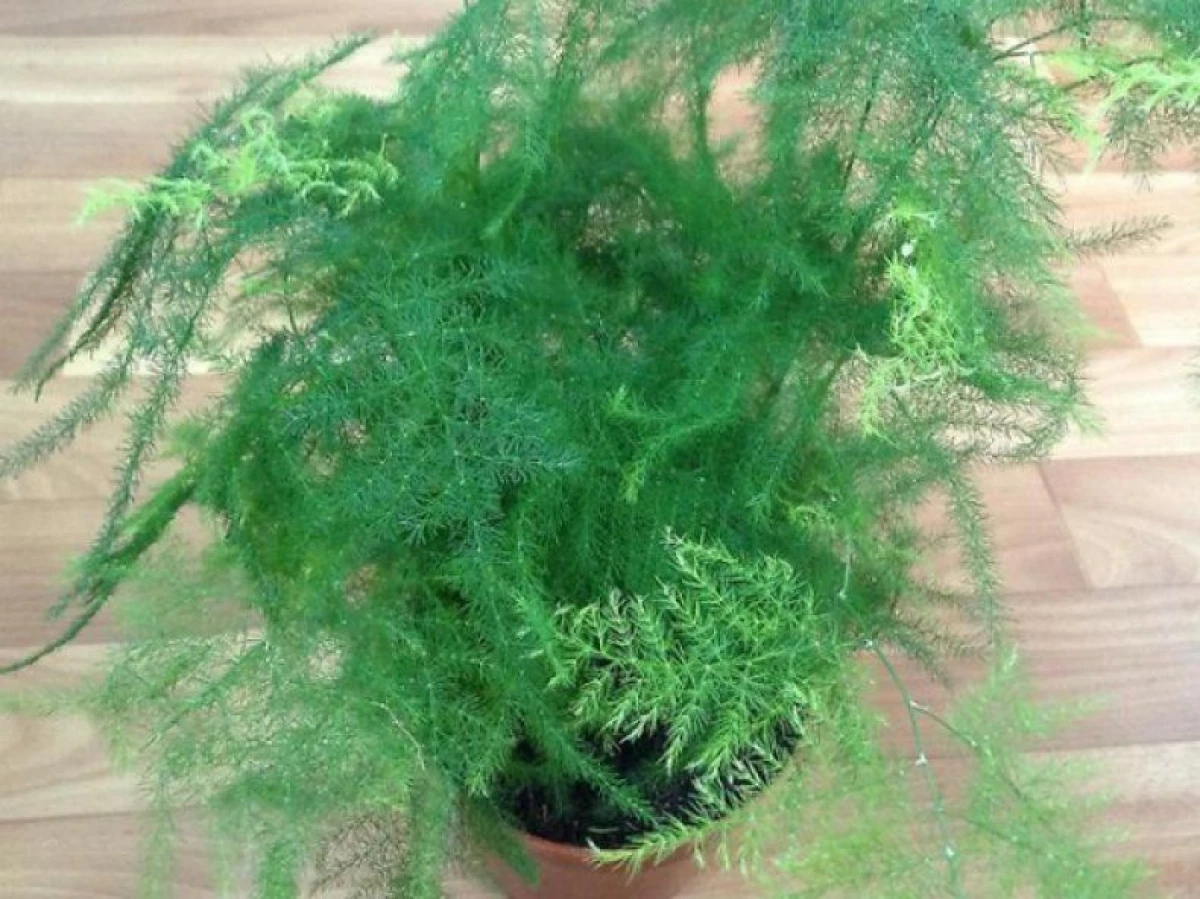
The stalks of the plant are bare, reach lengths up to 1.5 m, covered with scaly sheets. He has rounded red fruits, during flowering pink or white fragrant flowers bloom.
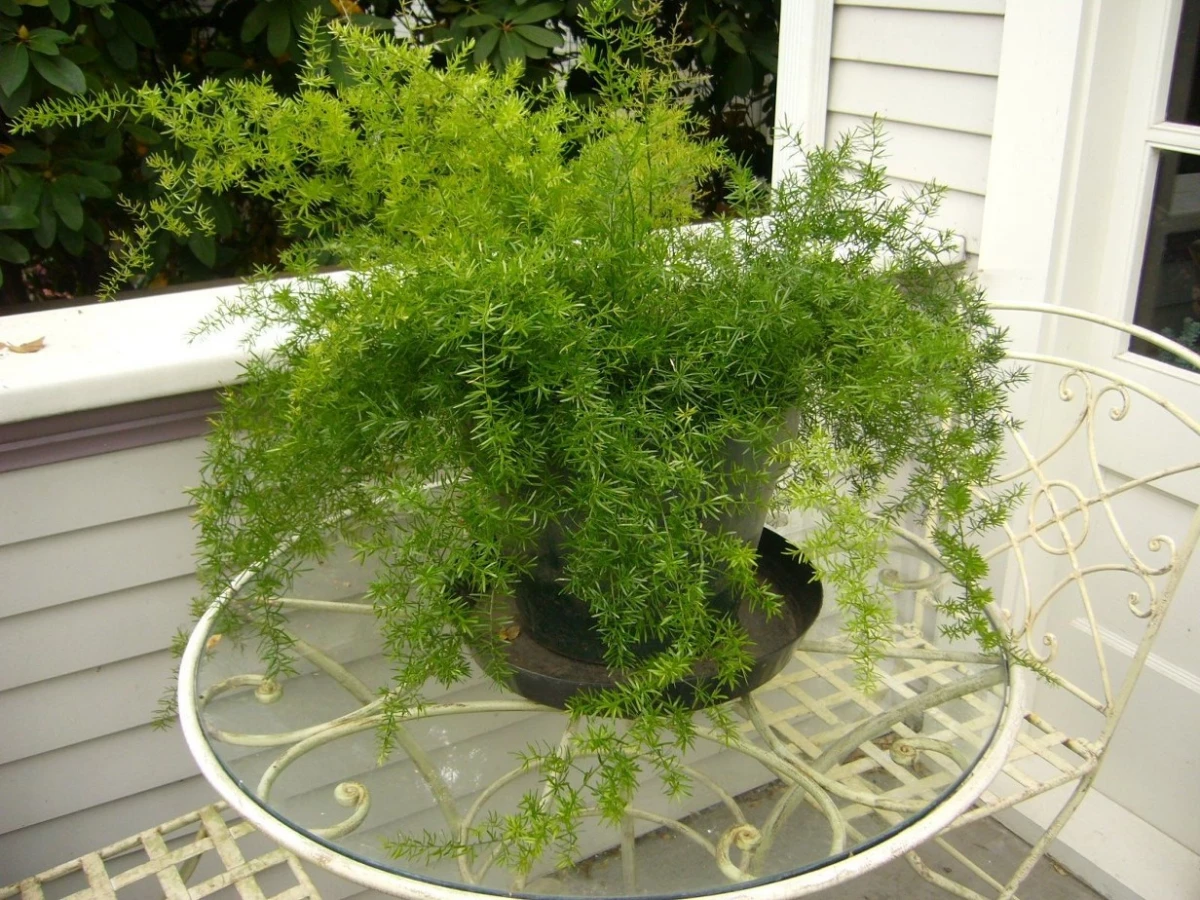
On shoots reaching lengths of 70-80 cm, there are many leaves resembling needles. It has small white flowers and small red fruits.
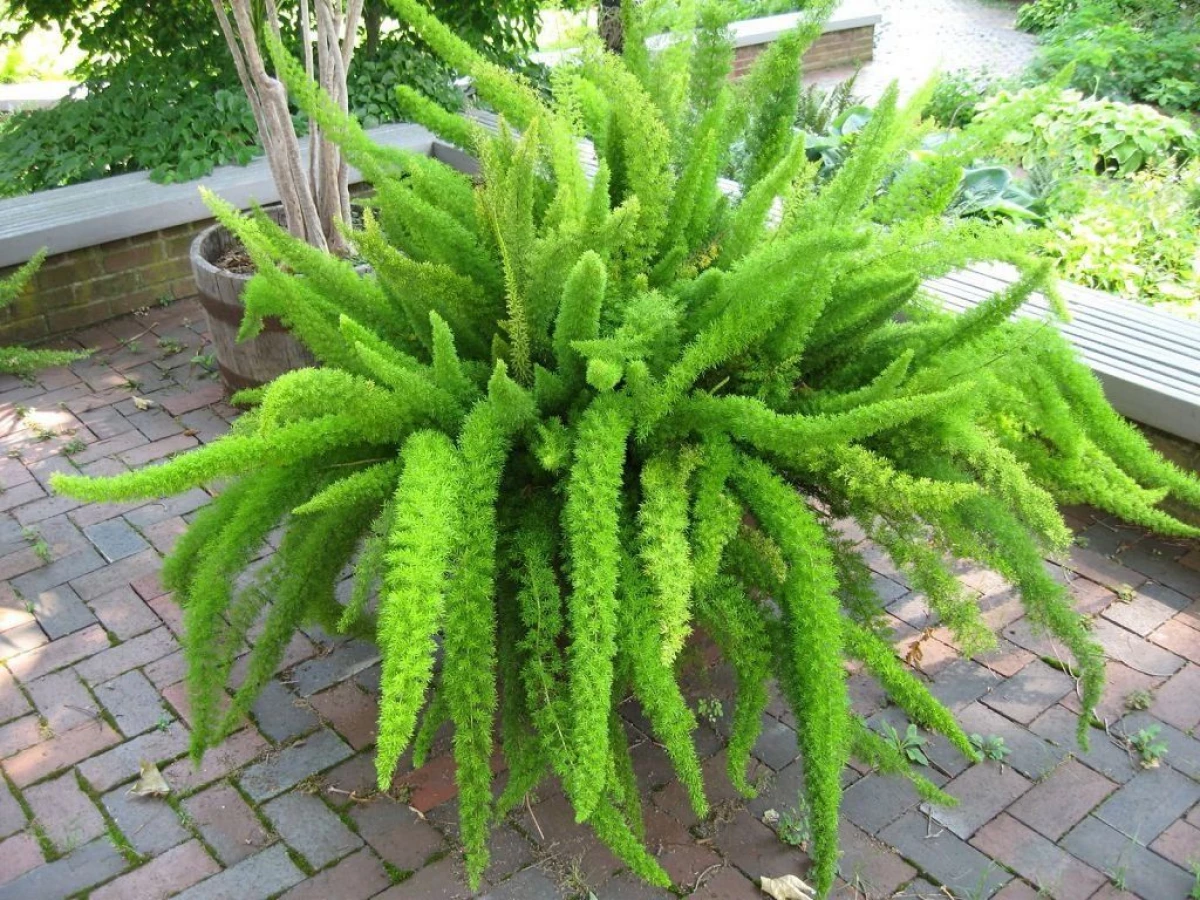
It has a weeds, covered with spiny stalks, shoots up to 4 m long. During flowering, cream flowers form creeps-shaped inflorescences.
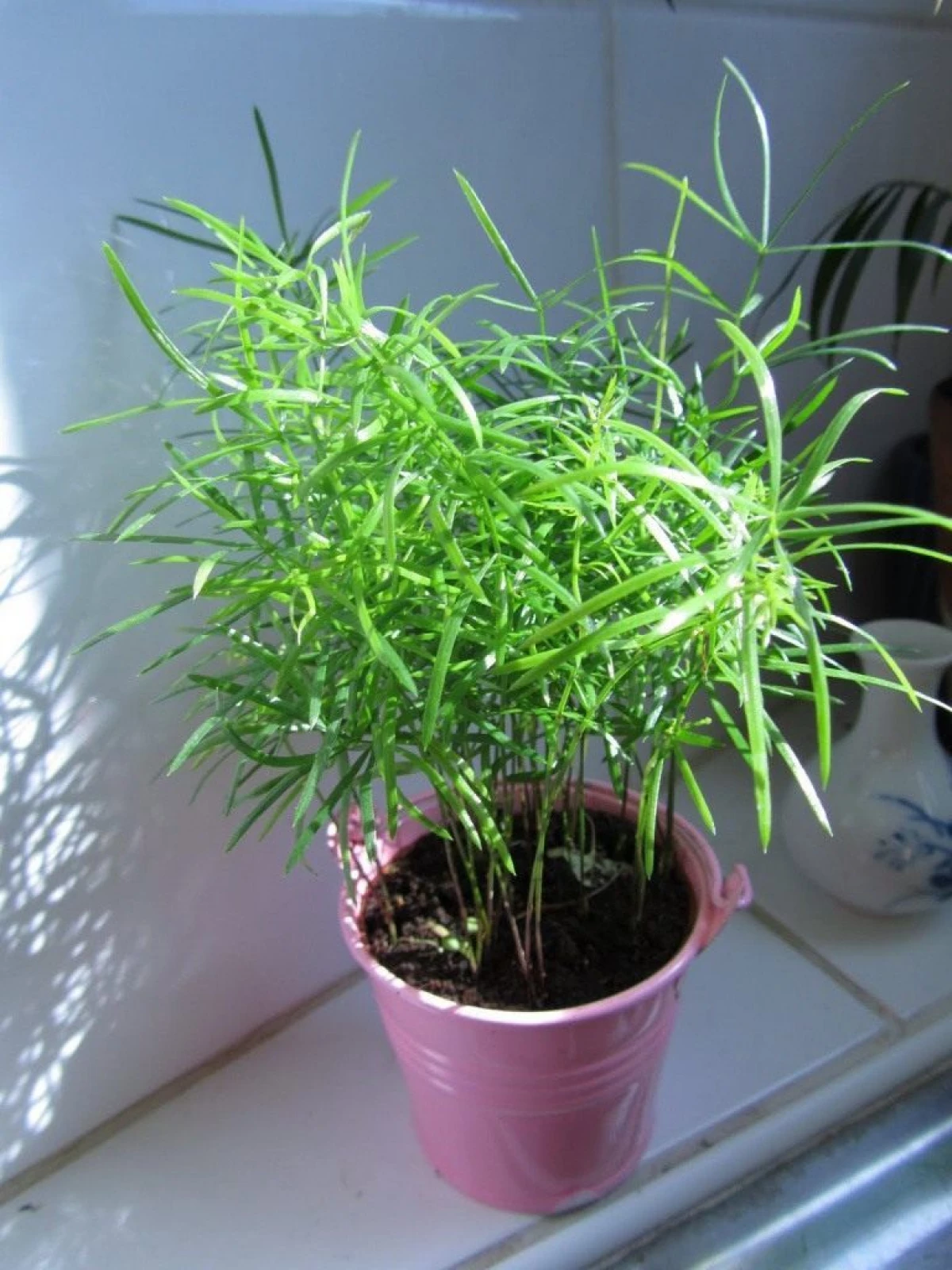
It has ovoid shoots of light green color, the fruits of red-orange color with the smell of oranges.

Containing rules
Temperature modeThe temperature is most comfortable for the growth and development of asparagus, the temperature should be + 15-25 ° C, well it grows at room temperature.
The temperature rise above + 25 ° C will lead to the drying of the roots and discharge foliage. The minimum permissible indicator in the winter - +10 ° C.
LightingThis is a light-affiliated plant, which, with a lack of lighting, becomes weak and sick. At the same time, it does not tolerate direct sunlight, so it is best to place a plant on the windowsills of the North-Western or northeastern windows, otherwise it is necessary to diaten.
The soilFor asparagus, weakly acidic universal soil or soil for ferns are suitable. In the finished substrate you can add large river sand, which will increase its moisture content.
You can prepare the soil yourself, mixing in one part of the humus, leaf land, the delicate earth and 0.5 parts of large sand.
In order to avoid stagnation of moisture, the roots need a drainage layer, which can be used perlite, vermiculite, broken brick, fine pebbles or clay.
Choosing a pot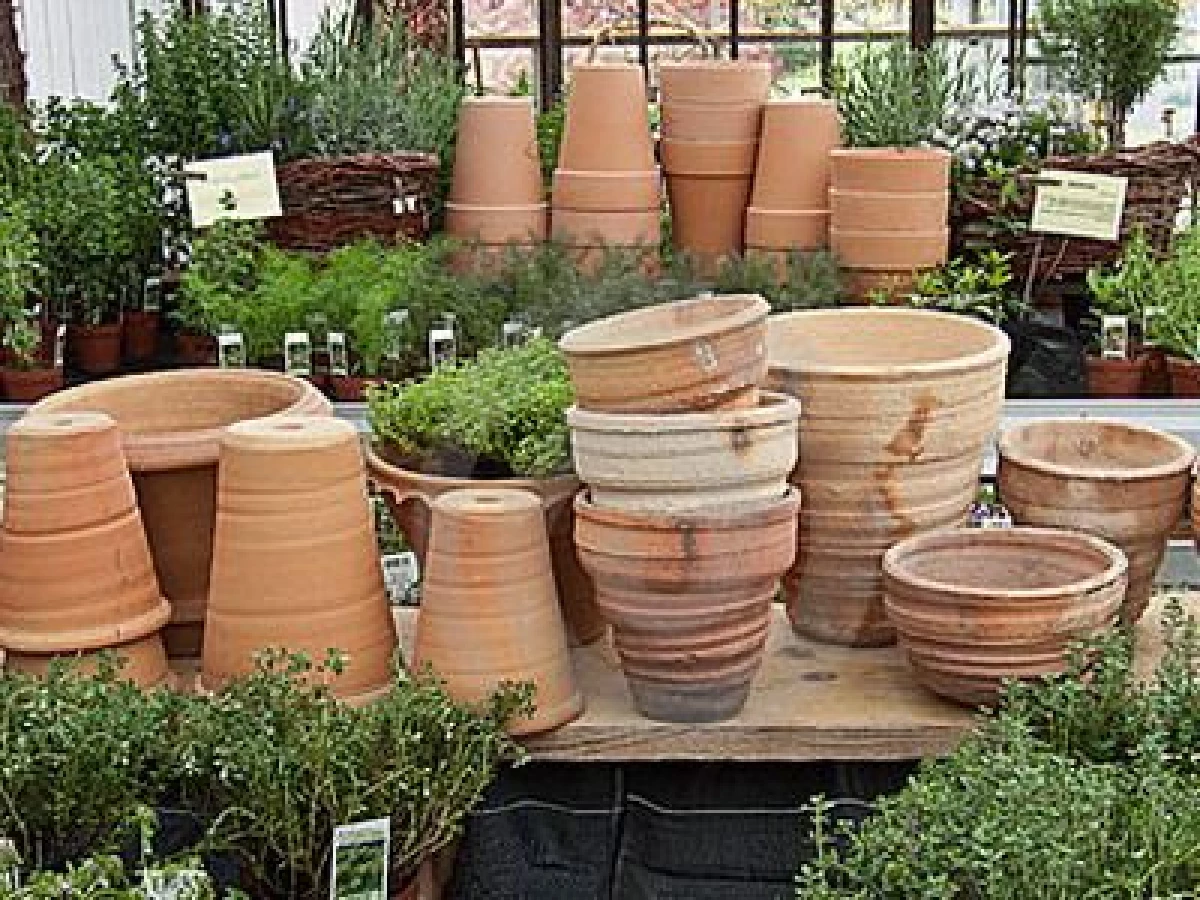
Young instances do not need volumetric capacity, otherwise they will begin to develop the root system, and not a green part.
Choosing a vase, you should give preference to the unlawed ceramics - this material helps to fight high humidity. There must be holes for drainage in the vase.
WateringThis is a moisture-loving plant, which in the growing season (early spring - mid-autumn) is needed abundant and frequent watering.
It is impossible to make the heat drying or stagnation of water in the pallet, as this may cause root rotting. During the two irrigation, the upper layer of the soil should dry, and the middle and deep - remain wet.
In the fall, the intensity of watering should be gradually reduced and during the period of rest watering a maximum of 2 times a week, and sometimes less often, as the soil is drying.
SubordinatePlant requires regular feeding:
- During the growing season, it is necessary 2 times a month to fertilize it with liquid complex fertilizers in the dosage indicated on the package;
- Alternative - alternate organic or mineral fertilizers for indoor plants;
- Regularly spray shoots with water with the addition of growth stimulator.
How to care for winter?
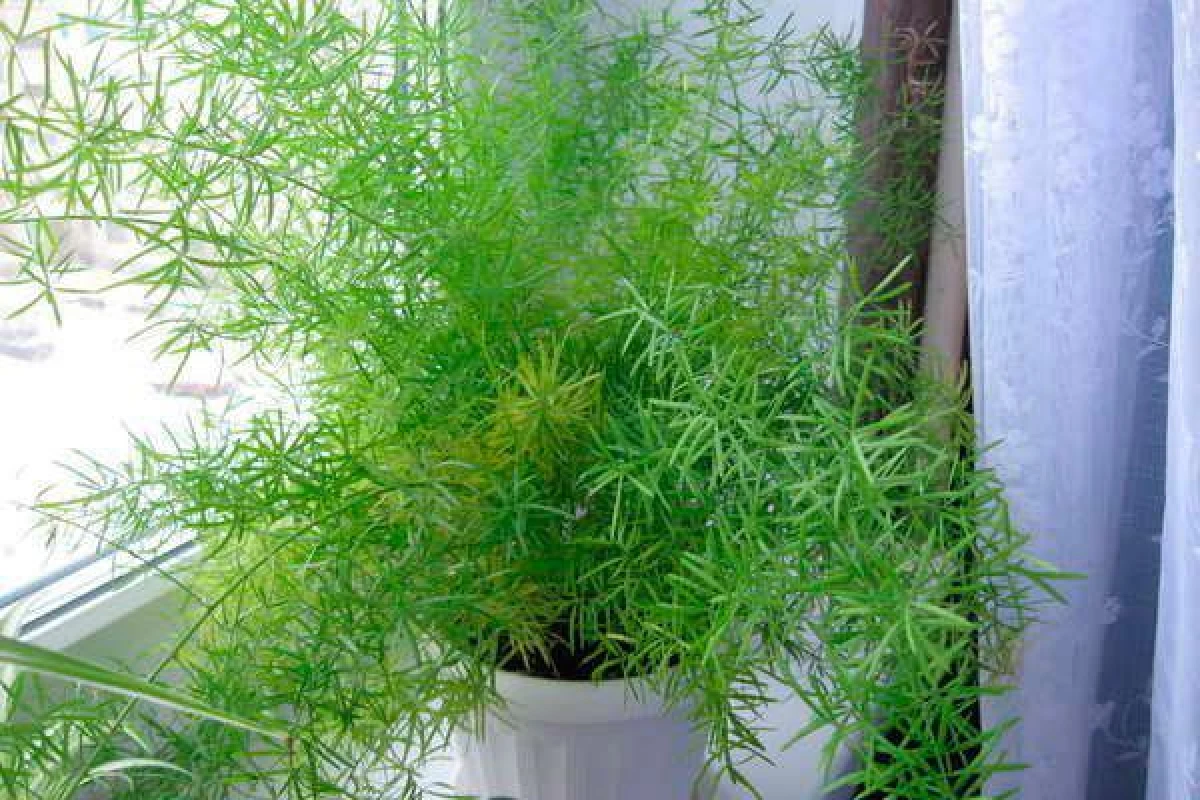
In this regard, it is not necessary to stop making fertilizers at all and water the plant, it should simply be reduced by watering up to 1 time per week, and feeding up to 1 time per month.
The room should be light and cool - the temperature should be approximately + 15 ° C, minimum - + 10 ° C.
What is required during flowering?
At home, AsParagus practically does not bloom and does not require changes in care.If flowering came, and this can only happen with adult copies of 5-6 years, you can resort to artificial pollination to obtain fruits. To do this, you need to transfer pollen from some flowers to others with a brusie or cotton wand.
Is it possible to grow a bedroom plant in the open soil?
You can grow asparagus not only at home, but also in open soil. To do this, you need to choose a well-lit place where there are no groundwater.
Planting seeds or young shoots of the plant in open soil is needed in the middle of spring.
When growing in the conditions of open soil, it is necessary to regularly conduct a muster, as well as to encourage shoots to prevent from the soil from contact.
Decorative room species look perfectly in garden sites, but still the most suitable for growing in the open ground are Asparagus Ordinary (Asparagus officinalis) and Asparagus edible (green asparagus).
How to plant?
For landing asparagus at home, its seeds sold in specialized stores are used. For this you need:
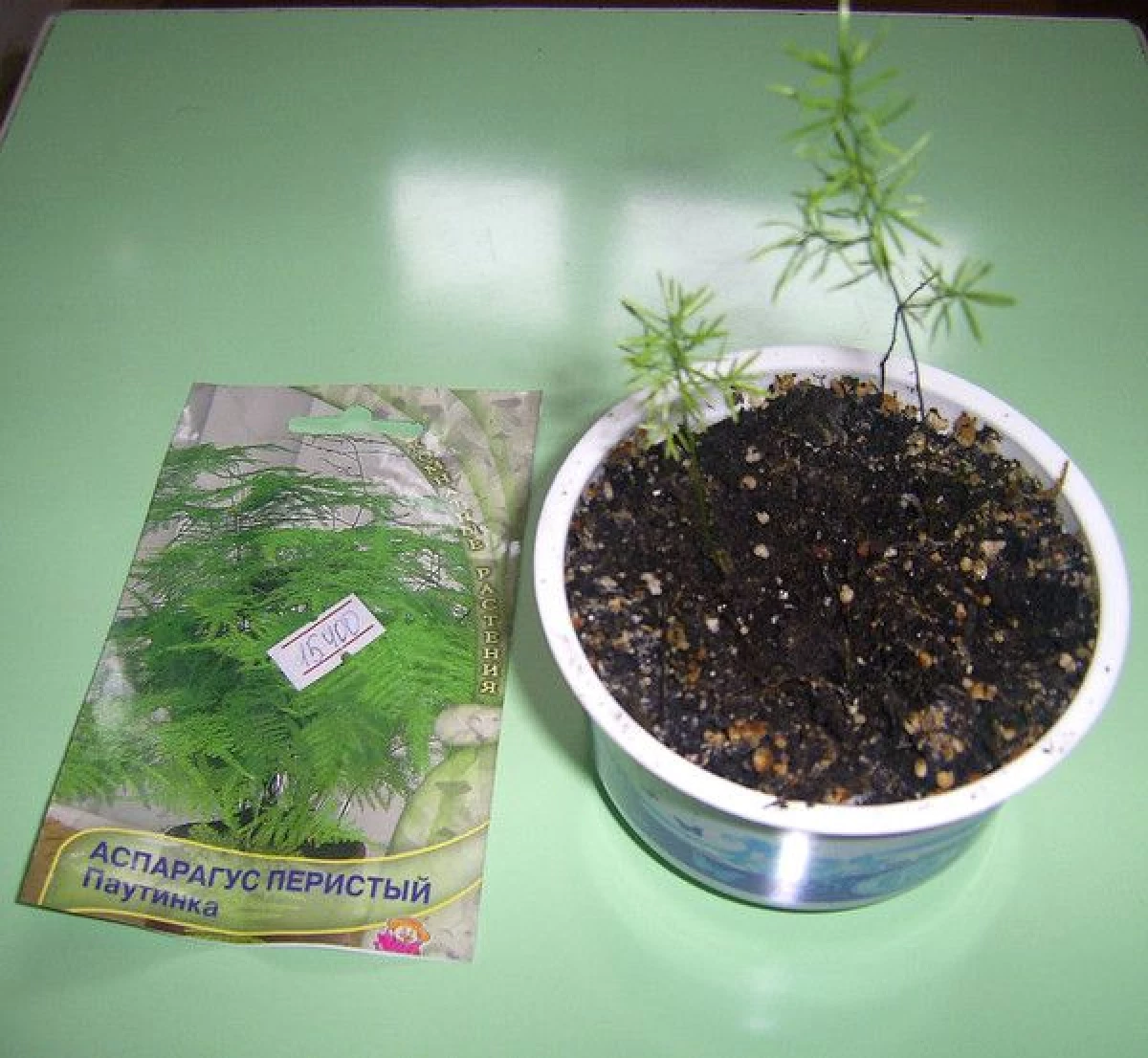
- Prepare a wet soil and sand in advance, as well as the container in which the seeds will be planted.
- Mix the soil and sand, pour the mixture into the prepared container.
- Seed seeds into a container with a substrate, slightly sprinkle their soil.
- Cover the vase with glass or polyethylene film.
- Put the resulting greenhouse to room with room temperature and good lighting.
- In order to avoid disease and molding of the Earth, it is necessary to regularly venture the greenhouse.
Landing need to be carried out early in spring.
When and how to transplant?
Asparagus badly tolerates transplant. Therefore, this procedure should be carried out only by necessity:- a week after purchase;
- with strong expression;
- In case of illness.
Before the plant will be 5 years old, the transplant is performed annually, after that - once every 2-3 years. The procedure is carried out in April or May - at the beginning of the actual growth period.
The transplant process:
- Good to pour a plant.
- Extract it from an old vase along with an earthen room, holding asparagus for the base.
- Crop long roots, handle sections of chopped coal sections, remove yellow and bare stems.
- Pour the drainage in the new Vase, put the plant in the center and fall asleep free places with fresh soil.
Diseases and pests
Asparagus rarely affect diseases and pests, but it cannot withstand some insects and diseases:
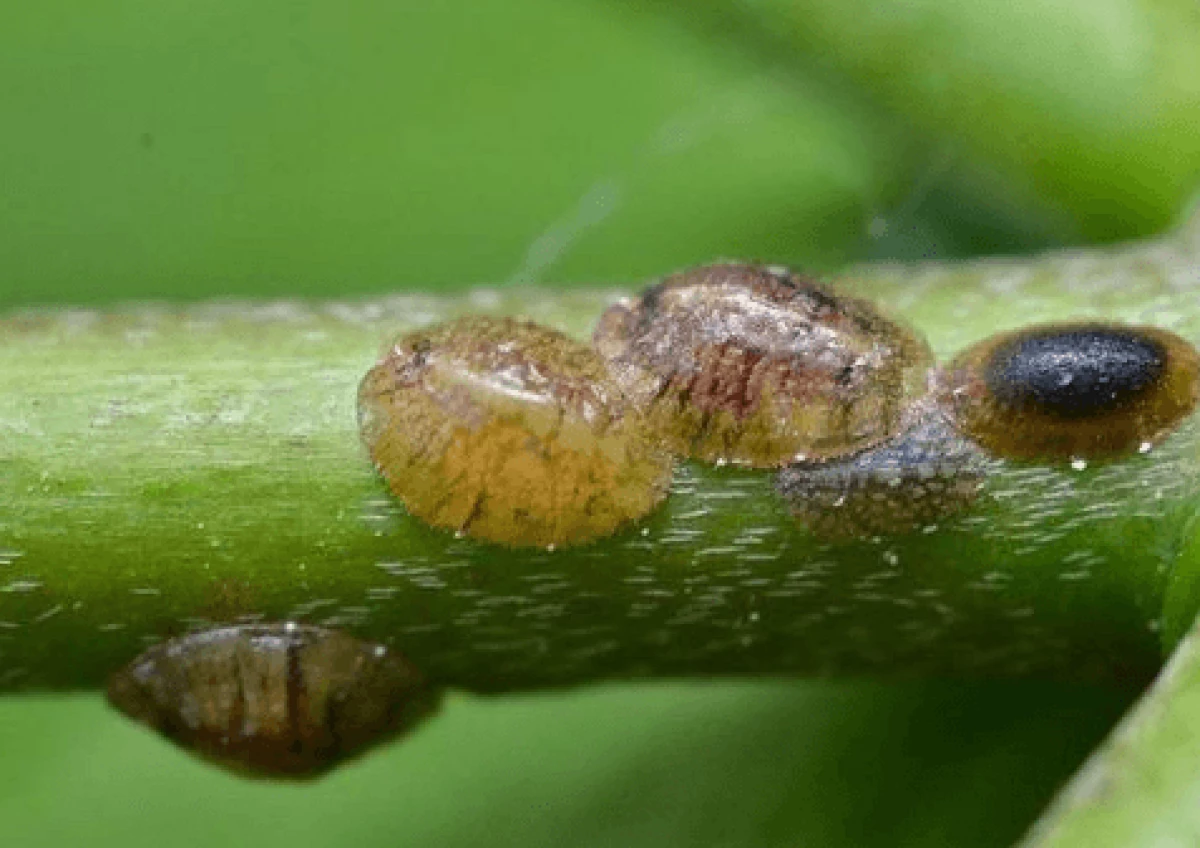
- Shield - when defeated by this pest, the plant turns yellow and dies over time. Processing with soap-alcohol solution, "carbofosomes" or "accllic".
- TLL and web tick - lead to the formation of white spots and gradual fading. We need treatment with soap solution and acaricidal agents.
- Wax worms - black spots on the leaves say about their presence. Insects need to be removed with a cotton swath in alcohol solution.
- Gray rot - on the fruits, a gray fluffy flare appears, it is connected with high humidity or temperature drop. Asparagus bordeaux liquid or chlocked copper should be treated.
About the health of the plant says the condition of his leaves. If the leaves are yellow, and over time and dry is a sign of irregular irrigation. Excess and insufficient irrigation causes drying or rotting the root system, feeding branches and leaves. Also, foliage can turn yellow due to too low air humidity, soil depletion or lack of light.
Asparagus is not only beautiful, but, thanks to its ability to clean the air, and is useful. His presence in the room contributes to improving the mood and well-being of family members, soothes the nervous system.
Caring for this plant is simple, the main thing is to adhere to the recommendations on the right watering and location of the plant and it will delight those around your beauty for many years.
